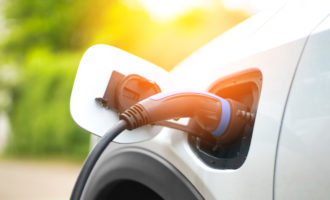Partial exemption is an issue for many farms, but one that is often overlooked, or dealt with incorrectly. Daniel May, VAT Manager explores the issue further and how farms can overcome this issue.
A business is considered partially exempt when it receives income which is taxable for VAT purposes (e.g. crop and livestock sales) and income which is exempt from VAT (e.g. residential property letting). The difference between zero-rated and exempt supplies should be noted.
A zero-rated sale (e.g. foodstuffs fit for human consumption, land let for grazing etc.) is taxable which means associated input VAT can be recovered. Input VAT attributable to exempt supplies is not recoverable unless it falls within certain limits. In either case, no VAT is charged to the customer. Supplies subject to the 20% or 5% rate of VAT are also ‘taxable’.
What must I do if I am partially exempt?
The business must consider the impact of partial exemption on input VAT recovery each time it submits a VAT return and again at the end of the VAT year. Most VAT years in the agricultural sector run to the end of March as returns are generally submitted monthly.
A partially exempt business’s input VAT is split into three ‘pots’ –
- The first contains input VAT directly attributable to taxable supplies – this is likely to include VAT on goods such as seeds, fertilisers and sprays, and on services such as transport of goods and contracting
- As you may expect, the next pot contains input VAT directly attributable to exempt supplies – this is likely to include goods and services incurred in maintaining and renovating rental properties, letting agent fees and commissions etc.
- The final pot contains all residual input VAT which cannot be directly attributed to either taxable or exempt income – this is likely to include overhead input VAT on items such as office costs and accountancy fees
As previously suggested, the taxable input tax is recoverable, the exempt input tax is not at this stage because we do not know the outcome of the de minimus test. Input VAT in the residual pot must be apportioned between taxable and exempt supplies.
The standard method of input VAT apportionment
To apportion residual input VAT, a business may use the ‘standard method’ without HMRC agreement. This is usually sufficient for a farming business, but if it does not produce a fair and reasonable attribution of input VAT, the farm may apply to HMRC to use a Partial Exemption Special Method (a ‘PESM’) of their choosing. A PESM must be approved by HMRC before it is used.
Under the special method a percentage of input VAT is attributed to taxable and exempt supplies. The percentage is calculated by taking the total taxable supplies made in the period and dividing this by the total taxable and exempt supplies.
That percentage is then rounded up to the nearest whole number to leave the percentage of residual input VAT to be allocated to taxable supplies. For example, if £600,000 of taxable supplies are made and £100,000 of exempt, the recoverable percentage is 86% – i.e. 600,000 / (600,000 + 100,000) = 85.71% rounded up to 86%.
The exempt proportion of the residual pot is added to the directly attributable to exempt. The sum of these two figures is the total exempt input VAT attributable to exempt supplies. If the total input VAT the business attributes to exempt supplies exceeds the de minimis limits, recovery will need to be restricted.
What is the de minimis test?
The de minimis rule is a threshold set by HMRC that allows small businesses to recover input tax linked to exempt supplies subject to certain limits. This can increase the amount of recoverable input tax for partially exempt businesses.
There are two stages of the test. Firstly, total exempt input VAT must be within monetary limits explained below:
| Total Exempt Input VAT | No more than |
| Monthly | £625 |
| Quarterly | £1,875 |
| Annually | £7,500 |
Secondly, the total exempt input VAT must not be more than the total input VAT – i.e. there must be more input VAT attributed to taxable supplies than exempt.
If both conditions are met, all input VAT is recoverable. A farming operation should watch out for significant repairs, improvements etc. to rental properties which may lead to more exempt input VAT than usual.
Each year, a partially exempt business must perform an annual adjustment to look at its partial exemption position for the whole VAT year. If de minimis is not met on an annual basis, the irrecoverable portion of input VAT will need paying to HMRC. Similarly, if the farm has been restricting input VAT recovery in-year, it may be due a refund from HMRC.
Additional points – don’t skip these, there is some useful info here!
- A newly registered business can complete its VAT returns until the first annual adjustment on a ‘use-based’ method without agreement from HMRC. This is useful if taxable supplies won’t be made from the outset, but it is thought de minimis will be met at year end.
- If a business is de minimis in one VAT year, it can consider itself de minimis on each return during the next VAT year until it gets to the annual adjustment calculation.
- While the annual adjustment is calculated to the end of the VAT year, any adjustment required can be deferred until the VAT return after the year end finishes – so, the April return for monthly filers.
- Remember to consider opting to tax commercial buildings in order to recover input VAT on their construction/refurbishment and avoid potential partial exemption issues.
- Providing a person the right to store goods in a building is likely to be taxable at the 20% rate of VAT.
Partial exemption – test your knowledge!
I hope you’ve been paying attention thus-far! See if you can decide whether the farm below is de minimis on an annual basis.
- The farm has zero-rated crop sales of £1m and residential letting income of £200k
- It incurs the following input VAT:
- Producing crops, £2,000
- Residential letting, £6,000
- Residual, £5,000
Examples of typical taxable supplies in the agricultural sector:
- The sale of crops, livestock, and other foodstuffs suitable for human consumption
- Letting of land and buildings which has been opted for tax
- Land let for grazing
- Facilities provided for the purpose of storing goods (this is often incorrectly treated as exempt)
- Rights to fell timber or take fish
- Contracting
- Animal feed
Examples of typical exempt supplies in the agricultural sector:
- Residential property letting
- Other letting of land and buildings which has not been opted for tax
Answer to test
The farm is not de minimis.
Standard method % = 84% (1m/1.2m, rounded up)
So, residual pot input VAT = £4,200 taxable and £800 exempt
Total taxable = £6,200
Total exempt = £6,800
Exempt is less than £7,500 but more than 50% of total input VAT







